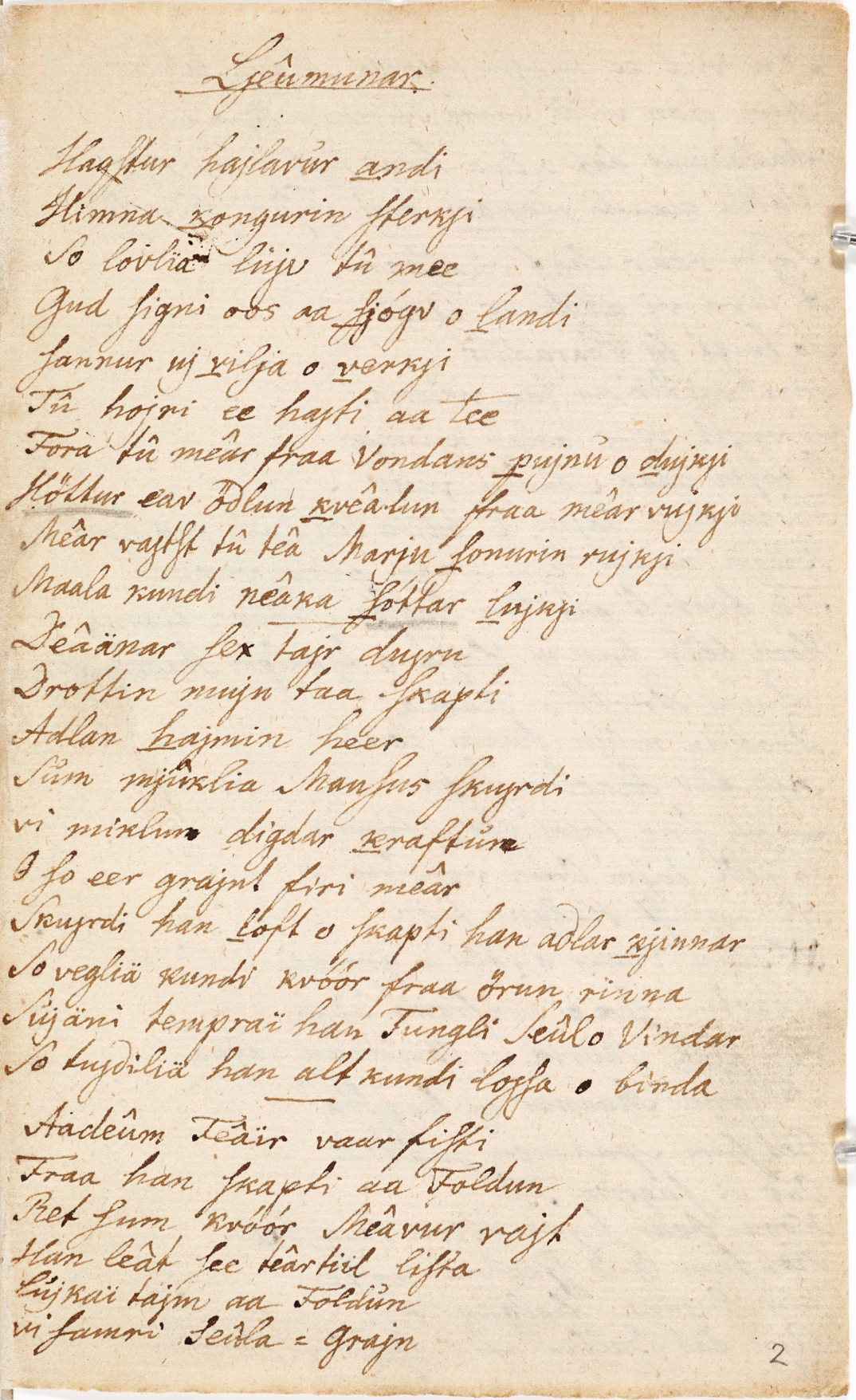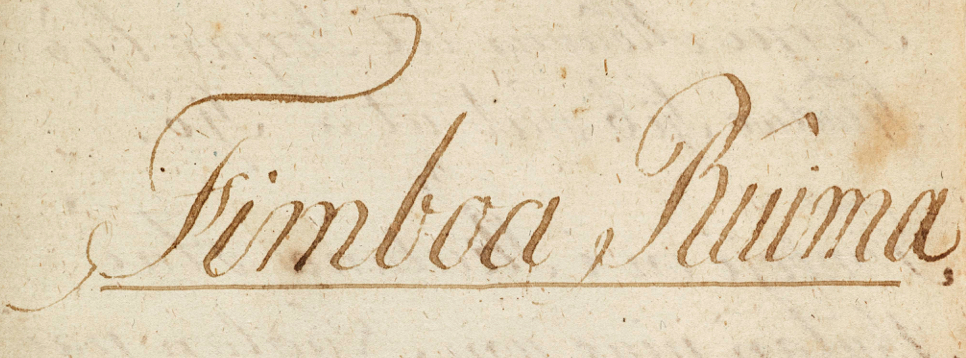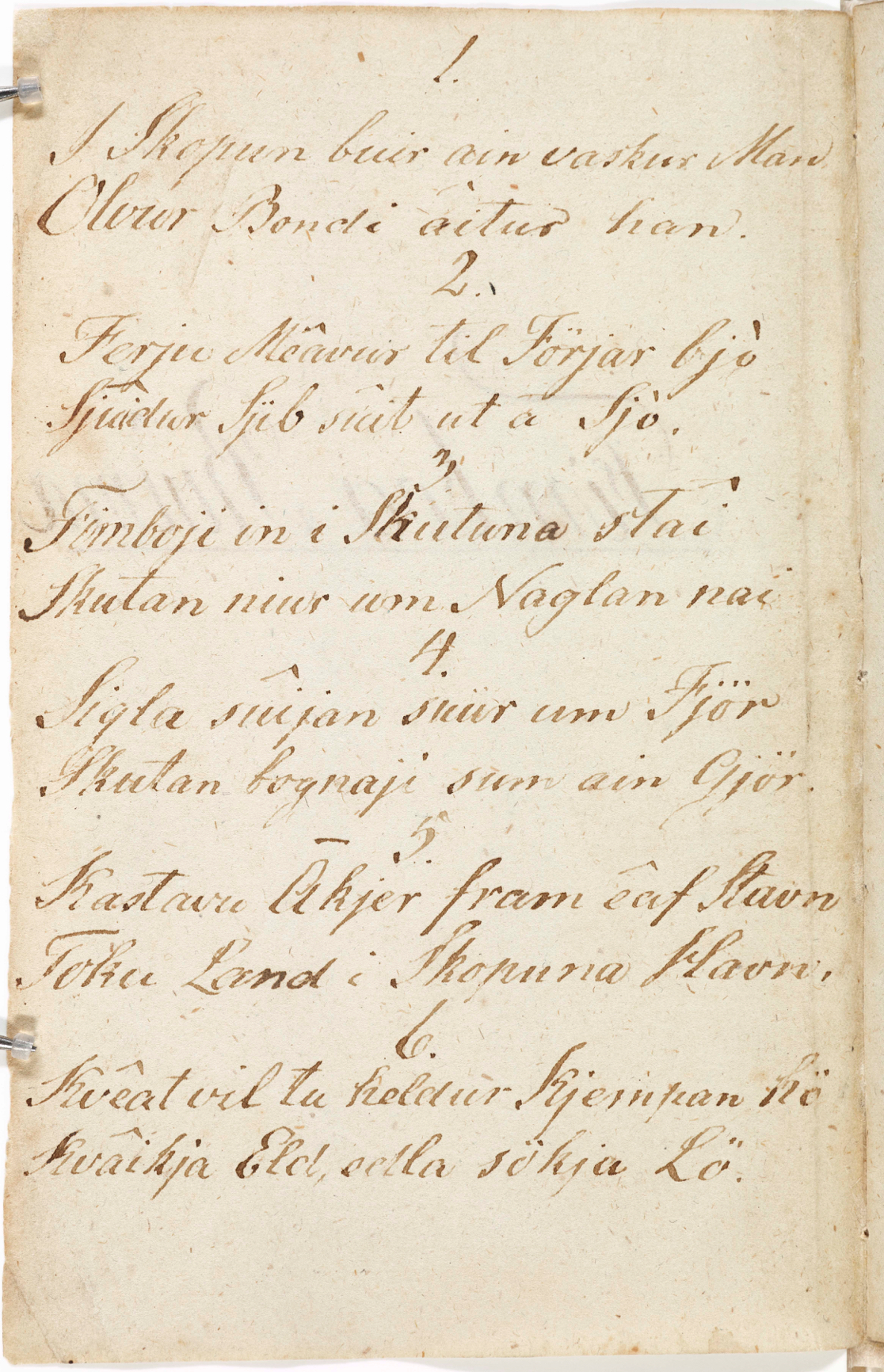Rask 113: A Ballad Manuscript in Two Parts
A small 22-page manuscript, half Danish, half Faroese, tells the story of a common interest in Faroese literature.
The Faroese ballads (kvæði) are an important part of the literary and linguistic history of the Faroe Islands and are found in a number of manuscripts from especially the 19th century. While most of the – especially well-known – manuscripts were copied by Faroe Islanders or on the Faroes, there are also some records copied by Danes.
A manuscript in the collection belonging to the Danish linguist Rasmus Rask (1787-1832), Rask 113, is actually both: that is, both written by a Faroe Islander in the Faroes and by a Dane in Denmark. The names of both of these copyists are also well known. Even though the manuscript only contains 22 pages, the story of its production tells a great deal about nineteenth-century interest for the Faroese ballads, both on the islands and in Denmark.
Rask 113 can be called both a Faroese and Danish manuscript because it was originally produced in two parts. That is, the manuscript consists of two Production units, to use a term employed by the Dutch manuscript scholar Erik Kwakkel (2002). The first production unit was written by Rasmus Rask himself, while the second unit was written by the Faroe Islander Jacob Nolsøe (1775-1869).
Part 1: Rask’s records
Rask’s half of the manuscript begins with a list of the Faroese ballads found in the Jens Christian Svabo’s large ballad manuscript, which today is housed in the Royal Library in Copenhagen, GKS 2894 a-c.
Following the list, there are three copies of ballads from Svabo’s manuscript:
- Ljómurnar (CCF 220), which is a Faroese reworking of an Icelandic psalm that was likely written by Jón Arason (†1550), the last Catholic bishop of Iceland. Svabo’s record (together with Rask’s copy) is the only written record of the Faroese version of the psalm and is only a third of the Icelandic version, which is otherwise well-preserved. On the other hand, the melody is still preserved in Faroese oral tradition (see Turið Sigurðardóttir 2011: 3).
- Viljorms kvæði (or Ragnarlykkja, CCF 12 Aa), which is one of the so-called Heroic ballads or kappakvæði. The ballad tells of Viljorm, who travels to the king of Gautland (i.e. Götaland) seeking to marry the king’s daughter. The meeting with the king does not go as planned but rather ends in a fight in which Viljorm is killed. The second half of the ballad tells of Viljorm’s son, Hergeir, who sails to Gautland to avenge his father.
- Brókar táttur (CCF 193 A), which is one of the comic ballads (táttur), a type of shorter ballad concerning daily life on the Faroe Islands rather than telling of ancient heroes. Ballads of this type, which are already known from the seventeenth century, were also written by well-known Faroese poets such as Poul Nolsøe, better known as Nólsoyar-Páll (1766-1809; see Isaksen 2017: 41).
Concerning the dating of this part of the manuscript, Povl Skårup (Rasmus Rask

Part 2: Nolsøe’s Copy
The second half of the manuscript consists of only one ballad, namely Finnboga ríma (CCF 47 C)

The scribe of this part of the manuscript was the Faroe Islander Jacob Nolsøe (1775-1869), commerce manager for the Danish monopoly on the Faroe Islands and brother of the aforementioned Poul Nolsøe (Nólsoyar-Páll).
Jacob Nolsøe is otherwise best known for his translation of Carl Ploug’s poem about the 1848 Battle of Schleswig (Påskeklokken
Rasmus Rask and Jacob Nolsøe
It is certainly no coincidence that the two parts of the manuscript were bound together. The two language fanatics corresponded during the years 1831-1832 regarding an orthography for Faroese, which still at that point had no official spelling (it didn't come till later in the nineteenth century, driven by the provost V.U. Hammershaimb, who published a Faroese grammar in 1854).
Between 1829 and Rask’s death in 1832, the Danish linguist received multiple manuscripts from Nolsøe, including a grammar, Færøsk Sproglære, which is now also housed in the Arnamagnæan Institute (AM 973 4to). Nolsøe’s copy of Finnboga Ríma now in Rask 113 was, however, the first manuscript Rask received from the Faroe Islander, though exactly when is unclear.
Rask had yet another connection to the Faroese businessman and politician. During the years 1830-1832, Nolsøe’s daughter, Maren Margrete, widow of a skipper named Kjergaard who was lost at sea, worked as a housekeeper in Rask’s house, where she received two
Despite the numerous manuscripts sent between Rask and Nolsøe through the years, only Rask 113 can be called a “two-in-one”: One manuscript

Contact
Seán
Telephone: +45 3533 7566
sean.vrieland@hum.ku.dk
Bibliography
CCF = Corpus Carminum Færoensium: Føroya Kvæði. Eds. Sv. Grundtvig et al. 1941-2003. Copenhagen: Munksgaard.
Isaksen, Jógvan. 2017. Færøsk Litteraturs HistorieI. Nivå: Marselius.
Kwakkel, Erik. 2002. Towards a terminology for the analysis of composite manuscripts. Gazette du livre médiéval 41, s. 12-19.
Skårup, Povl. 1964. Rasmus Rask og Færøsk. Copenhagen: Ejnar Munksgaard.
Turið Sigurðardóttir. 2011. Paradise Lost og “Slaget ved Slesvig”. Oversættelse ved etableringen af færøsk litteratur. I Holmberg, C.-G. og P.E. Ljung (eds.) Translation – Adaptation, Interpretation, Transformation: IASS 2010 Proceedings. Lund: University Open Access.
